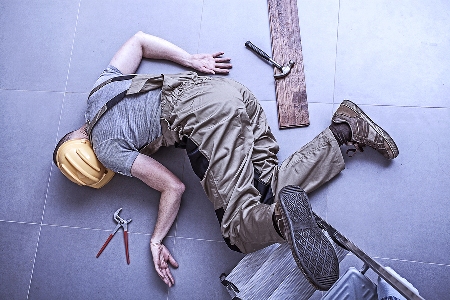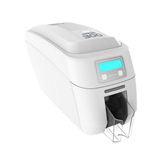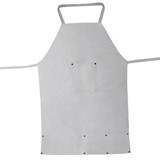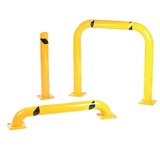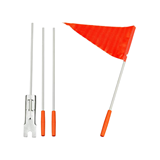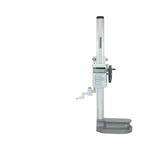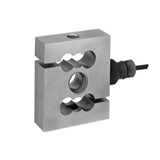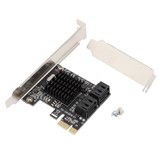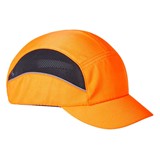Why has our safety record stalled? Chris Williams investigates…
Late last year Safe Work Australia released a new report which found between 2003 and 2011 as many as 232 workers had died following a fall from height, with no improvement in our height safety record during that eight-year period.
While workplaces dramatically improved their height safety performance in the previous period from 1989 to 2002, since then the numbers have plateaued. Given the only acceptable number of fatalities is zero, the statistics make sobering reading according to Safe Work Australia CEO, Rex Hoy.
"This latest report shows more needs to be done to prevent workers falling from heights, particularly in the construction industry," Hoy said.
The construction industry accounted for one third of falls-related fatalities in the last four years. Many of the fatalities involved house construction workers, particularly painters and roofers.
One-third of the workers fell to their death from a ladder, with falls from vehicles and roofs also prominent in the data.
"These figures show why the construction industry was identified as a priority for prevention activities," Hoy said.
In addition to the high number of fatalities, 21 workers' compensation claims were logged each day for a fall-related injury, requiring one or more weeks off work. EACH DAY.
"This is a considerable loss of productivity and employers should be ensuring workers have the correct safety equipment for the task," Hoy said.
"Falls-related incidents also place a considerable burden on our health system with nearly one in ten of the workers who were hospitalised in the 2006 to 2009 period admitted with injuries due to a fall from height."
Hoy said Safe Work Australia is working with work health and safety authorities to achieve a 20 per cent reduction in the number of work-related fatalities by 2022, but what needs to happen to get the fall fatality numbers moving in a downward direction again?
According to Rick Millar, Technical Manager for height safety and fall protection specialist Capital Safety, there are three key issues that need to be addressed.
First, Millar says, the use of personal protective equipment (PPE) needs to be given greater priority by the various state regulators, rather than just focusing on eliminating the risks. Secondly within the regulations he says there should be a requirement for height safety equipment to comply with the relevant Australian Standards. Last but not least, people who work at height need to be properly trained.
"When WorkCover looks at height safety they see the use of height safety equipment as secondary to ensuring that the person who works at height isn't placed at risk. That's as it should be, but it means that the use of equipment such as lanyards and harnesses is at the high risk end and is therefore the last thing they look at," Millar told IndustrySearch.
"That's not helpful in as much as people will try and work around using the equipment, and in the regulation the use of PPE for height safety is not actually included. It's in the code of practices, it's not in the regulation."
Further, Millar says, free trade has led to a situation where it doesn't matter what equipment you use, and ensuring PPE is compliant with Australian Standards needs to be more rigorously enforced.
"You can take anything from anyone and use it, and it's okay as long as you don't get hurt," Millar said.
"If we were going to manufacture a (height safety) product and send it to Europe, it would not be allowed to be used by anyone in the European market unless it carried an appropriate CE accreditation mark, which indicates that the product has been tested and is compliant to the European standard. In Australia we don't do that.
"What we say is that a product should be manufactured to an Australian standard which is fine, but we don't enforce it. The only time we enforce it is when we go to court and someone is found to be using a product that is not compliant to the Australian standard."
Millar said in his experience larger companies were generally better prepared than smaller ones, but that everyone would benefit from a greater emphasis on height safety training.
"Generally speaking most large companies, such as large construction companies, are trying their best to get people trained in the use of equipment at height. They use contractors and sub-contractors and make sure they give clear direction as to what's expected of them in relation to the use of this type of equipment," Millar said.
"But of course you have smaller companies who are contracted, plumbers who work on roofs or gutters – smaller one or two man operations – and if you look at the organisations where these problems have occurred you'll quite often find it comes not from the major contractor area but the smaller ones.
"What that plumber doesn't realise is that if a man falls and he's working for him he will be spending most of his future life working for WorkCover, basically having interviews, doing reports, going to court. He will be fined; he won't be able to do his job as efficiently as before. There's a good chance a small company will go bankrupt – and he's lost a good man."
Which is where training before the fact could make all the difference.
"I think it's reasonable that the regulator should require people who work at height, who have to wear PPE equipment, to have some form of training. But the regulator isn't keen to do that…I don't know why I can't talk for the regulator," Millar said.
"Regardless of whether they are working on a cherry picker, or a work box on a crane, or a construction site, or cleaning windows, they need to put more emphasis on the requirement of people to be trained in the use of product and to be able to work at height in safe conditions – and that includes supervision and management."
And it's not just down to Australia's safety regulators, company management must understand its responsibilities and think more laterally about how to eliminate risk.
"Generally the OHS officers will do their risk assessments and they may then come to us for recommendations on the equipment that can be used," Millar said.
"But in the end it comes down to their risk assessment and their understanding of their work and how they perceive the risk.
"For example, did the worker need to have PPE on, could he have done something in a different way?
"If he's got a brand new roof he's putting on a building, well normally the building is sitting on a cement slab, so why can't you use a scissor lift and come up underneath and work the roof that way? You don't need to have PPE on a scissor lift."
Of course even with the right equipment and the right training there will still be falls, which raises the more enigmatic question of why people take risks in the first place, and it's a question Millar is at a loss to properly explain.
"I can't answer that. Sometimes it's attitude, sometimes it's price. Sometime the guys don't think," Millar said.
"Maybe they think 'this will only take me a minute to do, I'll get this out of the way, I don't need all that junk', it's complacency. 'We work on a roof and it's too hard with all these string lines and ropes up to do the job, or I have to get a scissor lift in position where it's just as easy to climb up and do this'."
The message then is clear. If OHS authorities more prescriptively regulate, and employers more effectively identify risks and solutions, and train staff accordingly, collaboratively a difference can be made. Will that happen? Time will tell.

